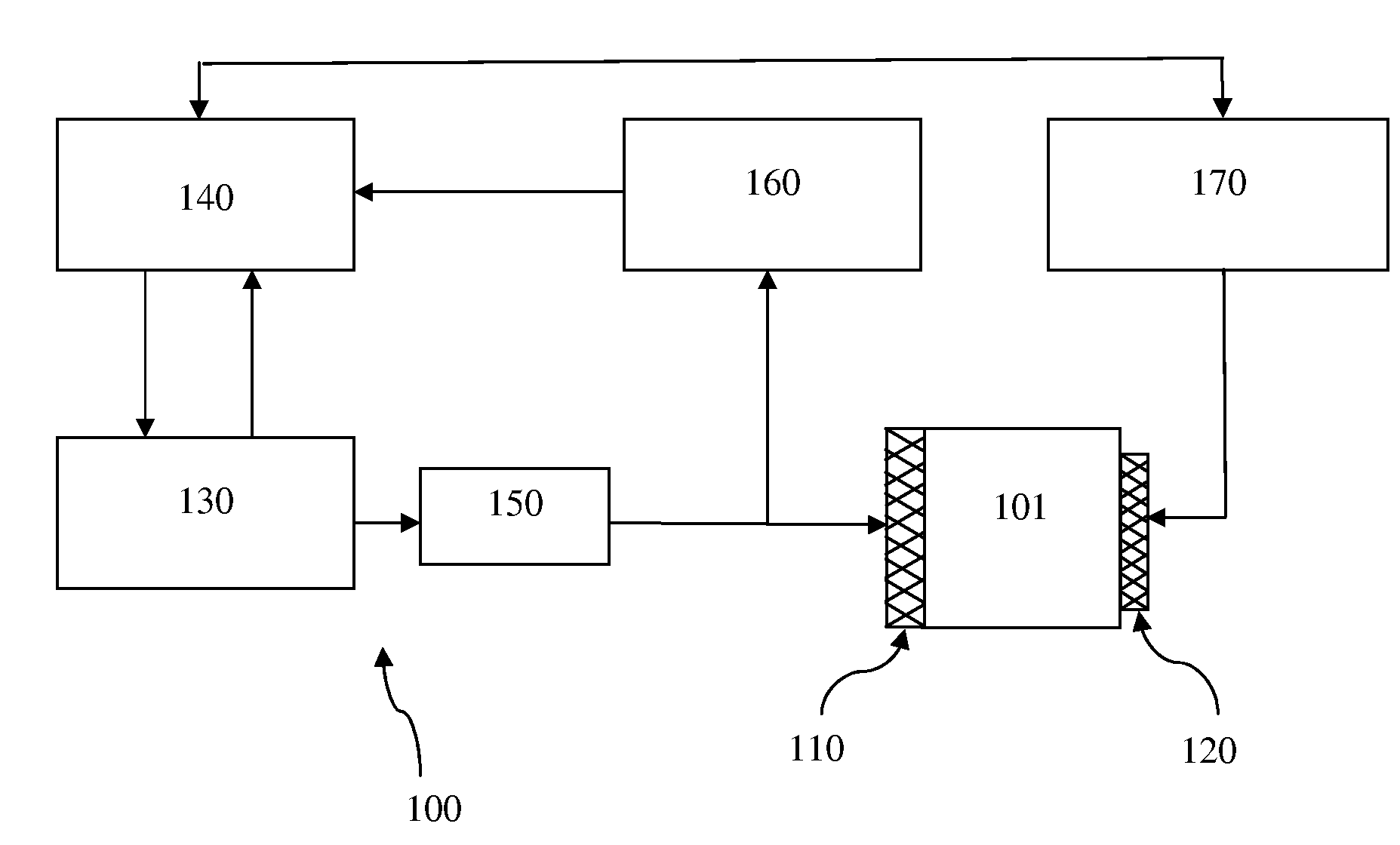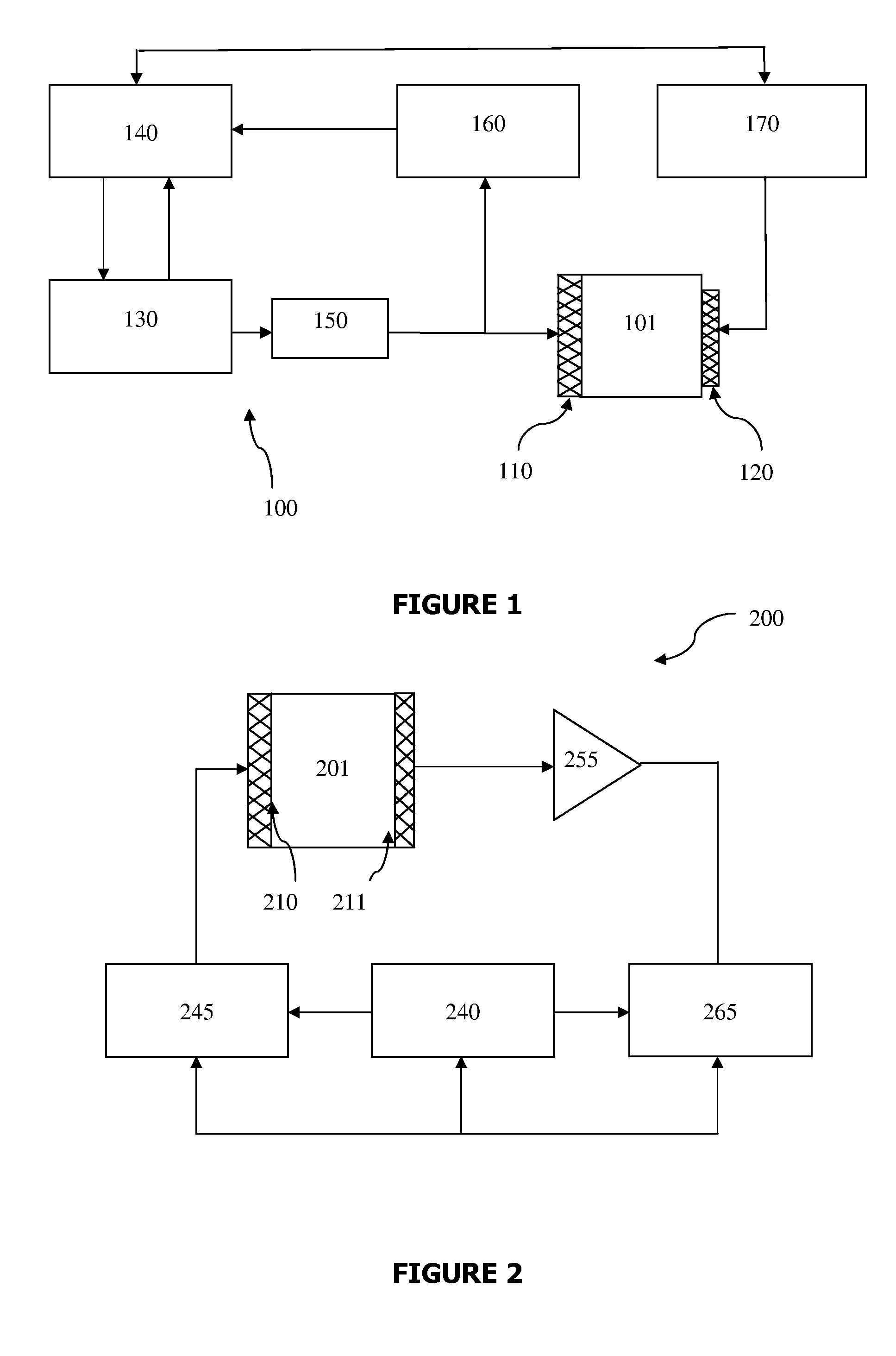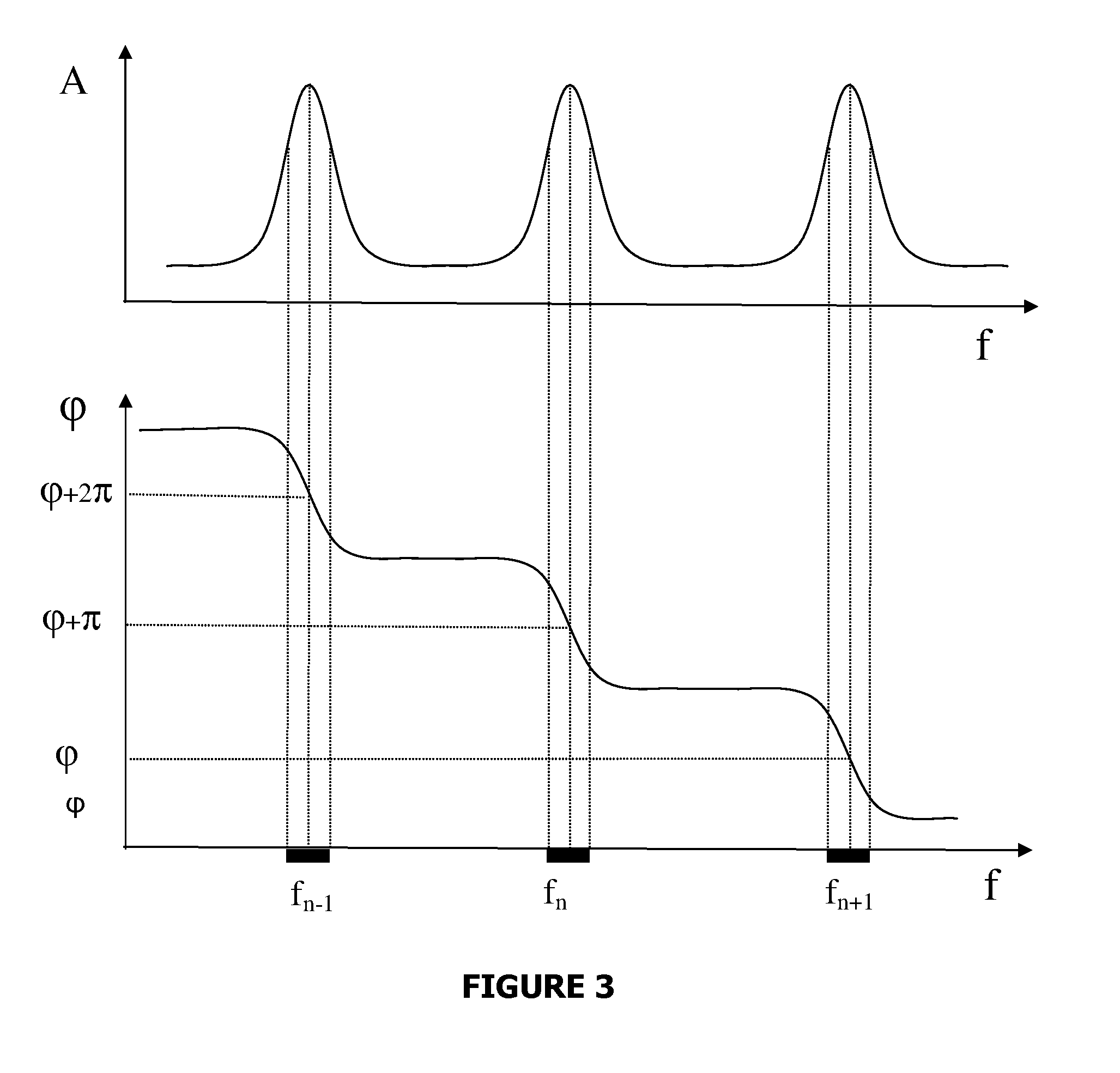Method and device for ultrasound assisted particle agglutination assay
a particle agglutination and ultrasound technology, applied in biomass after-treatment, instruments, enzymology, etc., can solve the problems of continuous change of ultrasound wavelength, appearance and disappearance of standing waves at various resonance frequencies, and breakage of standing waves, so as to achieve accurate assessment and more sensitive detection of target agents
- Summary
- Abstract
- Description
- Claims
- Application Information
AI Technical Summary
Benefits of technology
Problems solved by technology
Method used
Image
Examples
example 1
Ultrasound-Assisted Particle Agglutination Method for Detection of HIV Antibody
[0070]Materials and Methods. Capillus HIV-1 / HIV-2 test kits were obtained from Trinity Biotech. The Trinity Biotech Capillus HIV-1 / HIV-2 kit (cat #6048G) is a qualitative latex agglutination test for the detection of antibodies to HIV-1 / HIV-2 in human whole blood, serum or plasma. In this kit, the positive control is inactivated human serum or plasma containing antibodies to HIV-1 and HIV-2 whereas the negative control is normal human serum or plasma non-reactive for antibodies to HIV-1 / HIV-2. These reagents are model systems and mimic real clinical samples: positive and negative human sera.
[0071]The Capillus HIV-1 / HIV-2 is intended as an initial screening test in low volume testing facilities, in emergency situations and in areas where sophisticated equipment is not available. In addition, the test can be used as a supplemental assay in test algorithms.
[0072]Conventional agglutination procedure. The assa...
example 2
Ultrasound-Assisted Particle Agglutination Method for Detection of Food-Borne Pathogenic Bacteria E. coli O157:H7 and L. monocytogenes
[0076]The procedure for detection of E. coli O157:H7 and L. monocytogenes requires a non-specific enrichment step, and it is desirable to conduct rapid tests using undiluted growth media samples. Therefore, in these experiments, the serum was inoculated with live bacteria, and after enrichment of bacteria in serum and broth, dilutions of the bacteria in the same broth that was used in second enrichment step were prepared. These procedures are described below in greater detail.
[0077]Materials and Methods. The E. coli O157:H7 and L. monocytogenes strains used in this study were obtained from International Collections (NCTC, ATCC). For E. coli samples, 10 μl of stock culture of E. coli O157:H7 was inoculated in 5 ml of Fetal Bovine Serum and incubated in autoclaved Erlenmeyer flask on orbital shaker at 37° C. at a speed of 200 rpm. After 15 hours of inc...
example 3
Increasing of the Sensitivity of Haemagglutination Assays by Ultrasound-Assisted Particle Agglutination Procedure
[0082]Serum or reverse grouping test is used as adjunct to cell grouping (forward blood typing) for detection of anti-A and anti-B antibodies in serum or plasma. Serum grouping (reverse blood typing) by conventional haemagglutination test (CHT) and UPA methods was performed as follows.
[0083]Tube Test Method. Test serum was 2×, 4×, 8× and 16× diluted with non-reactive serum AB. 70 μl of serum was mixed with 1 drop of Reagent Red blood cells in each Pyrex glass tube (Sigma cat 3 CLS980010-72E). The reagent mixture was incubated at room temperature for 30 minutes (room temperature incubation for a prolonged time is recommended to enhance the sensitivity of the method). Then, cells were spun down at 1000×g for 15 sec. The pellet was examined after gentle resuspension of cells. Positive reaction is characterized as clear liquid with red pellet on the bottom of test tube wherea...
PUM
| Property | Measurement | Unit |
|---|---|---|
| frequency | aaaaa | aaaaa |
| frequency | aaaaa | aaaaa |
| velocities | aaaaa | aaaaa |
Abstract
Description
Claims
Application Information
 Login to View More
Login to View More - R&D
- Intellectual Property
- Life Sciences
- Materials
- Tech Scout
- Unparalleled Data Quality
- Higher Quality Content
- 60% Fewer Hallucinations
Browse by: Latest US Patents, China's latest patents, Technical Efficacy Thesaurus, Application Domain, Technology Topic, Popular Technical Reports.
© 2025 PatSnap. All rights reserved.Legal|Privacy policy|Modern Slavery Act Transparency Statement|Sitemap|About US| Contact US: help@patsnap.com



